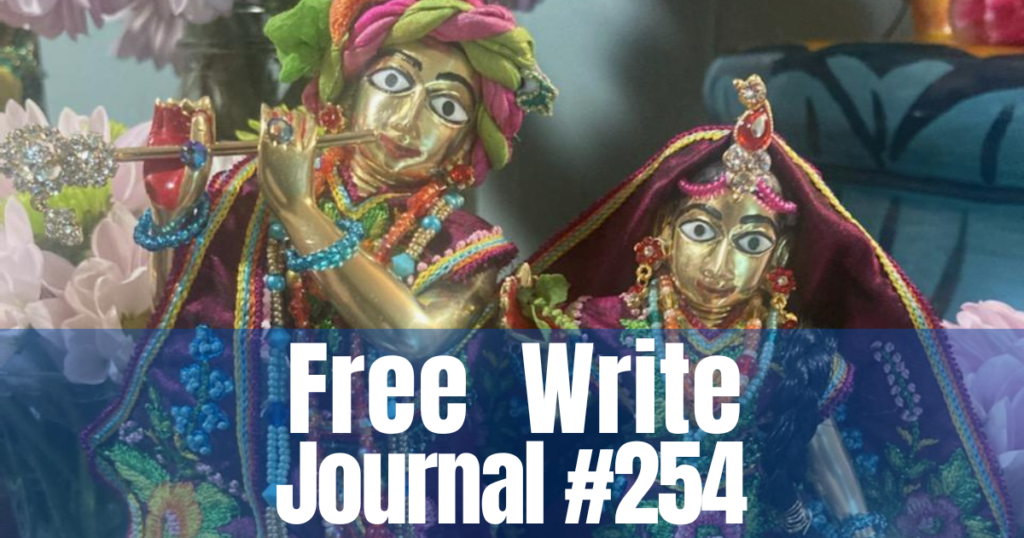
Announcement
16 copies of my inner journal, Worshiping with the Pen, volume one are still available for sale.
Please contact Baladeva Prabhu if you would like a copy
([email protected] or (518) 754-1108)With my illness, I am canceling writing volume four until my health returns.
Despite my sickness, I am continuing to print the weekly journal.
In our out-loud reading group, I’m the one who picks the new books we’re going to read when one of them is finished. There was a lot of appreciation for Caitanya-caritamrta as we read it. We read it twice, however, within a year. But Haryasva was in ecstasy (as he often is) just as we were finishing Chapter Twenty, “The Siksastakam Prayers,” and he was saying, “When are we going to read this again?” But as we were coming to the end of Cc., I had been mulling over other titles. The first one I thought of was KRSNA book because of all the wonderful true stories about Krsna. Then I was re-reading a newly published Journal, Worshiping with the Pen. There were some quotes from NOD in there, and they were very attractive to me. I like it when Prabhupada picks out a particular verse of sastra, quotes it, and says something like, “This is an example of ecstasy in separation.” And then he goes on to another one that he picks out, quotes it, and then says what it is an example of in bhakti-rasa. So I finally made my decision, and just as we were finishing Chapter Twenty of Cc. I announced it in time for the devotees to get the book, that they should be prepared to read The Nectar of Devotion next. As I said it, they cheered—they like the book! So devotees got their books on time, and we began our first reading. Guru dasa is what I call the “moderator” or the “master of ceremonies.” He picks the next devotee who is going to read, and he allows him to read for a certain amount of time, say five minutes, then he thanks the devotee and calls on another devotee. As we were about to begin The Nectar of Devotion: The Complete Science of Devotion, he announced that the devotees should turn to the first chapter. I yelled out to him as I saw him in the Zoom and said, “Wait a minute! What about the Preface and the Introduction?” He immediately apologized for skipping over lots of nectar, and we read the wonderful Preface before we jumped ahead to Chapter One.
Our book distribution at the July 1st festival was not perfectly done. The main reason was they started serving out the prasadam 45 minutes early instead of allowing the crowd to browse and buy books at the book table or listen to the kirtana. Full time wasn’t given for selling the books, and that hurt our distribution. Only a little time was spared for devotees to buy books; otherwise, they rushed to the prasadam table. John Endler, who was an organizer of the book sales and one of the main sellers at the table, was enthusiastic about the sales that we had in that little amount of time. But then he also had to go to take care of prior commitments. He reported that the best sellers were the three volumes of essays taken from Back to Godhead magazines. The second-best seller was The Best Use of a Bad Bargain, which was the book that I lectured on and which roused special attention because it was on the topics of chronic illness, growing old, and topics that people could relate to because everyone was entering the final stages of life. Most of my disciples are at least sixty years old. My Journal, which was the first new writing I’ve done in ten years, sold only fifteen copies. We have resolved to make some corrections for the next book festival, which occurs on my Vyasa-puja day in early December. We are not going to distribute prasadam until the devotees first get about an hour to browse and buy books.
Today I received a letter from a devotee, and he was inquiring about my book Readings in Vedic Literature. In particular he wanted to draw my attention to the chapter “The First Indologist.” He asked me a very nit-picky question about the first indologists. But I wrote that book so long ago, in the 1970s, that I couldn’t remember the Indologist he was talking about or some error I might have made. I do remember, however, that Prabhupada looked at that book. It was written so long ago that it was the 1970s and he was still present on the planet. Of “The First Indologists” chapter he said, “He has quoted the rascals, but he has not become contaminated.” Perhaps that’s the best thing about that book.
Bhaktisiddhanta dasa is a great sculptor and artist and has done wonderful works for ISKCON. My favorite work of his is the golden, huge, larger-than-life-size murti of Srila Prabhupada in his Samadhi mandira in Vrndavana. That mandira building and murti, plus Prabhupada’s rooms in Vrndavana, are to me the two most holy places in Vrndavana. Better than going wandering all over Vrndavana dhama at the various tirthas is to just stay and worship at the Prabhupada Samadhi mandira and Prabhupada’s rooms. When His Holiness Kadamba Kanana Maharaja read that in my book, he said, “I can relate to that.”
At 7:30 A.M., as the moderator was about to pick the first devotee to read from The Nectar of Devotion out loud, I asked him to first let me make an announcement.
I told some of what they’d heard before, but I elaborated on it. I told of my aches and pains, my various illnesses that are besetting me now. I told them of my painful hip, my headaches, my weak throat which makes it difficult to talk long, a general weakness which makes it hard to even sit through a long reading, and other maladies. One thing I forgot to tell them was that for weeks I’ve been having continual nausea, but enough was enough. I told them that because of these illnesses I had described, I was going to cancel both morning and afternoon out-loud readings. I said I didn’t want the devotees to make the readings on their own because I wanted to participate in them. As I spoke, Zoom pictures of the devotee participants flashed on the screen. They looked unhappy. I was unhappy too. I told them how much we both benefited from hearing Prabhupada’s books together. I don’t see returning to the out-loud readings in the near future, but I very much want to see it happen eventually—it’s such nectar.
Because of my weak health, I’m making cancelations of proposed visitors and even regular phone calls with devotees that I connect with for book production and other things. Eight months ago, Suresvara made arrangements to visit at the end of July; so I’m not canceling that one. I like the company, but I have to limit it and even cancel it as long as I’m in this condition.
Vicaru has gradually gotten into the groove of his services here. He knows just what to do in his different service capacities. Whenever he has time he goes to his room, and at any one time he has ten or fifteen books piled up. He’ll read some from one to another in an organized reading pattern. He reads very fast, so in a short period of time he finishes many books. He is setting a good example for not wasting time.
It is natural to desire a peaceful place for practicing meditation, but in Kali-yuga it is increasingly difficult to find it. Therefore, if we learn to always meditate on Prabhupada and Krsna, we may remain peaceful wherever we live.
Vedic literature recommends a sanctified place for the practicing transcendentalist. Lord Krsna advises in the Bhagavad-gita that one should “live alone in a secluded place and should always carefully control his mind.” This advice is given specifically for one who practices dhyana-yoga, but it is also applicable to the pure Vaisnava, even if he does not practice the eight-fold yoga system. For example, Srila Vyasadeva chose to live in a cottage which was ideal for his composition of Vedic literature under the order of the Supreme Lord. Sri Suta Gosvami describes Vyasa’s place:
“On the western bank of the river Sarasvati, which is intimately related with the Vedas, there is a cottage for meditation at Samyaprasa which enlivens the transcendental activities of the sages”.
—Bhag. 1.7.2
As the physical location can be an aid to meditation, even more important is the condition of one’s mind. And in Kali-yuga it also becomes increasingly difficult to keep the mind peaceful. If one manages to find the time and place for peaceful thought, one’s mind will disturb him. Perhaps Narada might have been in a disturbed condition because he had just experienced the death of his mother. Vyasadeva admits that he was dissatisfied in his mind, even though he had written so many Vedic scriptures. But in both cases, these great devotees transcended their personal difficulties by practice of devotional service. Therefore, the most important thing is practicing to transcend one’s mental and physical situation.
Srila Prabhupada made it clear that we should not think of him as a teacher who gives us some temporary help and whom we later give up. He said that a temporary relationship with the guru is implicit in the teachings of the mayavadis, but Vaisnavism teaches that the guru is eternal. The mayavadis sometimes compare the guru to a ladder. One uses the ladder to reach a higher position, but if the ladder is no longer needed, one kicks it away.
The physical form of the pure devotee is spiritual. He is a jivanmukta, a liberated soul, and his body should never be seen as material. His form is therefore worshipable in guru-puja. And in the case of a great soul like Srila Prabhupada, even after his disappearance, his body is honored in permanent samadhi.
Another statement by Srila Prabhupada which is similar to the letter to Govinda dasi is, “Personal association is for fools.” Prabhupada wrote this in a letter to a disciple who wanted to give up his service (prabhu-datta-desa) in order to be with Prabhupada. Prabhupada emphasized that a disciple should be satisfied serving his guru anywhere, and not seek to gratify himself by going to see and touch the personal form. This remark by Prabhupada has specific usage according to time and place, and some of us were shocked to hear it. In fact, we sometimes replied, “Prabhupada’s association is for fools? Then call me a fool, but I want to be with him.”
Srila Prabhupada had to respond to disciples who were feeling anxious about their separation from him. And he asserted that they were certainly together even though they seemed to be physically apart.
Tonight I went to Prabhupada’s samadhi-mandira to pray to Prabhupada. I propose to do this on a daily basis.
The mandira was busy—it was a noisy time of the afternoon—but it was my free time. I found a quiet place up on the balcony where it is not fully constructed. I was able to sit facing Prabhupada’s murti and take darsana from above. There is so much light reflecting off the murti that I couldn’t see Prabhupada’s features very well, but still, I have Prabhupada’s image in mind from when I am here during mangala-arati.
It is inspiring to sit up there and try to think of Prabhupada. I had a pad in front of me and tried to write to get myself to concentrate. In the future, I think I may use earplugs too. The noise of the marble cutters was distracting.
I pledged to continue writing books like Prabhupada Meditations. I don’t want to give up sharing my realizations about Prabhupada. By taking on this writing assignment, I can prove to myself and to the world that it is impossible to exhaust the glories of Prabhupada. That was a nice fruit of my prayer session.
I also placed before Prabhupada some of the things I am trying to decide in my life. I know that Prabhupada already knows my deliberations, but I put it before him in writing in the little notebook I plan to use for this purpose whenever I go to the samadhi for prayer.
One shouldn’t come to Vrndavana and neglect Prabhupada’s samadhi-mandira. We should come here more often than the halfhour mangala-arati. We should come alone and pray to him. My prayer is that I can return there regularly. Although we can consult directly with siksa-gurus and with sastra, we should make this our main focus on approaching Prabhupada: “Although there is so much other information coming in, I just want to be by myself before you, and pray to you, ‘Please direct me. Please keep me. Please let me write your glories.’”
I missed writing here for two days in a row.
I have been serving Prabhupada in the temple by teaching the classes, and tonight I had a meeting with my disciples. I was feeling humbled by the class I had heard earlier that made us aware of our fallen, hopeless condition. Our only hope is to be picked up by guru and Krsna. To hold a disciples’ meeting after that seemed a little contradictory. How can I assume to be a guru?
I spoke on the topic of humility and tried to purify myself, as well as to remind the devotees of the importance of a humble demeanor. I read the section from Caitanya-caritamrta where Dabir Khasa and Sakara Mallika approach Lord Caitanya and ask that He please accept them. I tried to remind us all of our disqualifications in this lifetime. Our sinful activities before we joined this movement have a permanent effect on us. We shouldn’t become proud and think that we have any qualification. We should be aware that we are dependent on the mercy of Prabhupada and Krsna. Not that we should become depressed, but rather we should be happy that we have been given contact with this movement despite our disqualification. We should accurately assess our position as tiny, smaller than a blade of grass. That is the maha-vakya, humility. Go forward in this way, vigilant against envy.
On a morning walk in Mayapur I heard Srila Prabhupada talking with Hrdayananda Maharaja, Bhavananda Maharaja, Tamal Krishna Maharaja, and others who spoke, as well as those who didn’t speak up to be identified and remembered on tape. One after another the devotees were telling stories of the effectiveness of Krishna consciousness. Sudama Maharaja told how the police came to the temple every day in answer to mangala-arati noise complaints, but they told the devotees they actually liked them and asked for prasadam. Hari Sauri told how the City Council in Melbourne spent $10,000 dollars in a case against them. The devotees decided not to contest it, but the judge threw it out of court. Hrdayananda Maharaja told how the police, a judge, and the guests in Caracas were favorable to Prabhupada in various ways. It was pleasing to hear the disciples telling these stories to their spiritual master. I liked them for this. Srila Prabhupada heard it and was pleased, praising how Krishna consciousness spreads and how although his men meet obstacles, they always go on. He said a preacher is very, very dear to Krishna and that we should all preach. That is the definition of a madhyama-adhikari. Prabhupada also warned that we cannot imitate the perfect vision of the paramahamsa and we should never think we are already perfect. A tiny devotee should not think he is in complete control of his senses or that he does not need to chant his sixteen rounds. It was a good warning.
Prayer and devotional service are labor, but they carry the best reward. One time Srila Prabhupada noticed one of his devotees looking tired and thin. Srila Prabhupada commented, “Heavy bhajana.” It can be like that.
The three necessities for entering Vrndavana according to Narottama dasa Thakura: give up material desires for satisfying the senses and bodily needs; enter through the six Gosvamis’ line; receive Lord Nityananda’s mercy.
How can I expect to eliminate sense gratification? At least I can be simple. I don’t have to hanker for special foods and drinks. I can accept whatever comes. I can follow Srila Prabhupada, the six Gosvamis, Lord Nityananda, and the authorized teachings coming down through our sampradaya. Achieve Krsna’s blessing by always being willing to contribute to His movement. I cannot come here only to take something away for myself. Srila Prabhupada wants us to become cintamani (touchstone). That will be proved not by our promises, but by our actions—can we give Krsna consciousness to others?
Just imagine such a motivation: become strong and help others. Yes, that will be the automatic result of becoming strong, as long as we live in the fellowship of devotees.
Preaching and sadhana come together in good japa. One who has enthusiasm, taste, and steadiness in chanting will progress beyond offenses and will also become a potent preacher. Yes, it’s true.
Then I ended, picked up leaves from the ground, got on a riksha, and left, elated.
Digression: Looking back at that 1997 visit to Jagannatha Puri, it was good visiting the holy places, because I was the main guide. I was there with my own group. I was able to speak, and it was comfortable because I was with a large number of my own disciples. That was ideal for me. When I go to Vrndavana and visit the holy places I don’t feel like an expert, so I always defer to some other Vaisnava who knows Vrndavana better than I do. But at Jagannatha Puri I felt it was my rightful place to speak, both because I had been reading the relevant passages of the Caitanya-caritamrita and because I was the spiritual master of the devotees in our group.
There was also nice bonding going on during this visit to Jagannatha Puri because we were all connected with Gita-Nagari Press. The devotees got to work together, to clean and cook. It lasted very well for two weeks, but toward the end there was some tension and it seemed that we had stayed long enough.
In the entry from January 11th there’s a series of pictures. The first one is a self-portrait: me in a hooded sweatshirt. I’m bent over a big legal pad, and my pen writes, “Every Day Vrindavan, January 11, 1997.” The words over my head say, “I gotta write. Give us this day our daily ‘bread.’” Under this is a picture of a devotee sitting upright in a stiff-backed chair, chanting with his arm extended and a beadbag on his hand. He is superimposed over the Hare Krishna maha-mantra, which is handwritten. The next picture shows a blue, four-armed form of Vishnu. Underneath are the words, “Sri Vishnu, Sri Vishnu, Sri Vishnu.” The next picture shows tall devotees facing each other, standing with folded palms. In the middle of them is a tulasi plant on a tall altar or stand. The caption says, “The wealth of Tapo-bhumi – sadhus and tulasi-puja.” The last picture in this series has a photo of the Siddha-bakula tree. Around the photo I’ve drawn simple figures chanting, with beadbags. The caption says, “The sacred tree where Haridasa Thakura chanted.”
Bhaktivinoda Thakura prays (in the last stanzas he wrote before his final seclusion) to live always in his modest bhajana-kutira in Navadvipa and remember the pastimes of Radha and Krishna. I’d also like to live somewhere and pursue my Krishna consciousness in reading and writing. But I need to go out and preach as well. Therefore, I’ve come to India with this select group. I’m here for them. I wish to read from and talk about the Caitanya-caritamrta today, and every day, and then travel to other places to speak there as well, as is my duty. My writing and reading enhance my ability to do this. I find topics to discuss and thus feel more prepared to help those who are entangled in worldly duties but who want to pursue Krishna consciousness in order find the peace and bliss therein.
The cantankerous typewriter has been set up for my use. If it gets too cantankerous, I can always go back to the pen.
There is no way to get at the truths of Krsna consciousness. They descend from the Lord and the ragatmika devotees as blessings. Visvanatha Cakravarti Thakura appeared in this world to tell us the intimate pastimes of Radha and Krsna which were not disclosed in Srimad-Bhagavatam (although whatever he said was based on the Bhagavatam). Visvanatha Cakravarti is both a recipient of mercy and a giver of mercy. Each of us can be like that, at least to a small degree. We have already received the Hare Krsna mantra from His Divine Grace, and we have already received transcendental knowledge from the Bhaktivedanta purports. We are already recipients of mercy; we are now bound to give mercy to others.
O Lord of the universe, O soul of the universe, kindly deliver us from the fiery brahmastra of the enemy which is hurtling toward us. Kindly break our tie of affection for our material kinsmen. Let our devotion to You flow like the Ganges in monsoon unto the Bay of Bengal.
This van is like an asana. I want to write something Krsna conscious, but I don’t want to be artificial. When I see a tree swaying in the wind, if it does not remind me of a gopi dancing for the pleasure of Krsna, then I should not claim that it does. O Lord of my heart, please teach me. Let the teachings of Krsna consciousness attract this conditioned soul and please allow me to participate in the sankirtana movement.
O Lord of the universe, who plays the flute in the sarad season and attracts the gopis to join him, and who, when the gopis are assembled tells them, “Go home now”-may that Lord give me a drop of mercy by revealing the nature of the holy names. I am chanting and I think it is the best occupation. But You know that it is also a sleepy desert for me. I beg for water, for the inspiration to chant in the mood of service. I beg to be able to go out from here and preach as one who loves to tell the glories of harer nama. This is my request, written in the Renault van on an Italian typewriter keyboard, while listening to the rain on the roof. All glories to Prabhupada.
When Mahāprabhu repeatedly uttered in sweet joy, “Speak, speak” they saw His pleasing excellent form, shining like the rays of a hundred bright moons.
Gauracandra, filled with intense desire, showing twice as much sweetness, constantly uttered, “Speak, speak.” He bathed the whole earth in the moonlight of His smile.
Giving up recitation of Brahmā’s prayers, the three brothers took grass in their teeth, and, pulling their clothing up to their throats, eagerly began reciting other verses.
Decorated with tears, they recited verses spoken by the gopīs, which were sympathetic to their own mood and able to bestow what they desired. They drowned in an ocean of happiness.
Hearing the sweet nectar of the verses recited in humble voices, Mahāprabhu, with desire, said repeatedly, “Quickly, bring the mahāprasādam.”
With tears washing their bodies, in an extreme condition, they fell on the ground near the Lord’s lotus feet.
The Lord who is affectionate to His devotees, with His moon-like face shining sweetly, giving them mahāprasādam from three beautiful pots named ghasa, shone brightly.
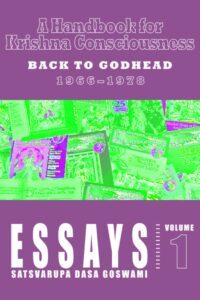
This collection of Satsvarūpa dāsa Goswami’s writings is comprised of essays that were originally published in Back to Godhead magazine between 1966 and 1978, and compiled in 1979 by Gita Nagari Press as the volume A Handbook for Kṛṣṇa Consciousness.
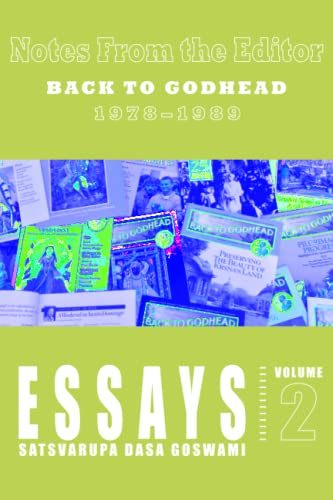
This second volume of Satsvarūpa dāsa Goswami’s Back to Godhead essays encompasses the last 11 years of his 20-year tenure as Editor-in-Chief of Back to Godhead magazine. The essays in this book consist mostly of SDG’s ‘Notes from the Editor’ column, which was typically featured towards the end of each issue starting in 1978 and running until Mahārāja retired from his duties as editor in 1989.
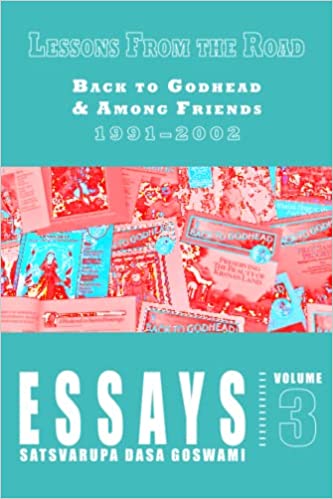
This collection of Satsvarupa dasa Goswami’s writings is comprised of essays that were originally published in Back to Godhead magazine between 1991 and 2002, picking up where Volume 2 leaves off. The volume is supplemented by essays about devotional service from issues of Satsvarupa dasa Goswami’s magazine, Among Friends, published in the 1990s.
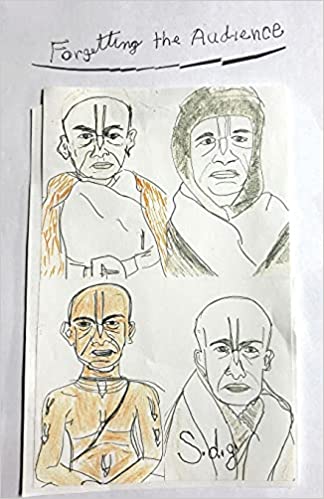
Writing Sessions at Castlegregory, Ireland, 1993Start slowly, start fastly, offer your obeisances to your spiritual master, His Divine Grace A.C. Bhaktivedanta Swami Prabhupada. You just drew his picture with your pencils. He appears carved out of wood…
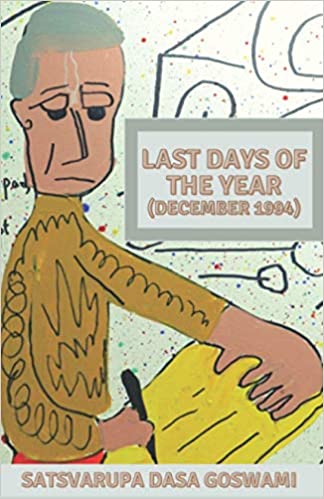 Last Days of the Year
Last Days of the YearI found I had hit a stride in my search for theme in writing, then began to feel the structure limiting me. After all, I had given myself precious time to write full-time; I wanted to enter the experience as fully as possible. For me, this means free-writing—writing sessions with no predetermined shape, theme, or topic…
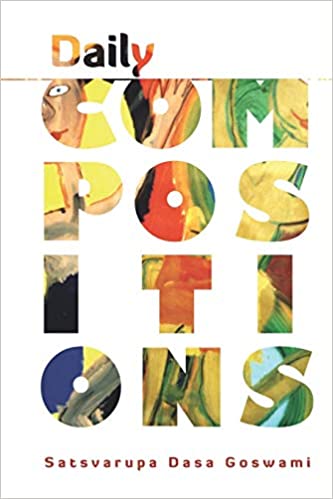 aily Compositions
aily CompositionsThis volume is comprised of three parts: prose meditations, free-writes, and poems each of which will be discussed in turn. As an introduction, a brief essay by the author, On Genre, has also been included to provide contextual coordinates for the writing which follows…
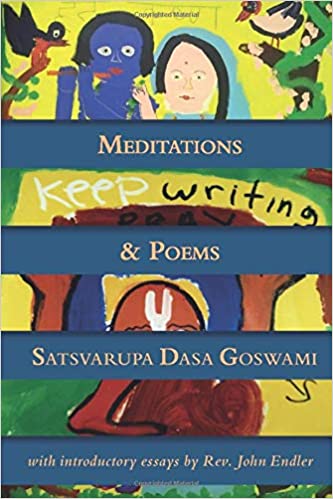 Meditations & Poems
Meditations & PoemsA comprehensive retrospective of poetic achievement and prose meditations, using a new trajectory described as “free-writing”. This volume will offer to readers an experience of the creativity versatility which is a hallmark of this author’s writing.
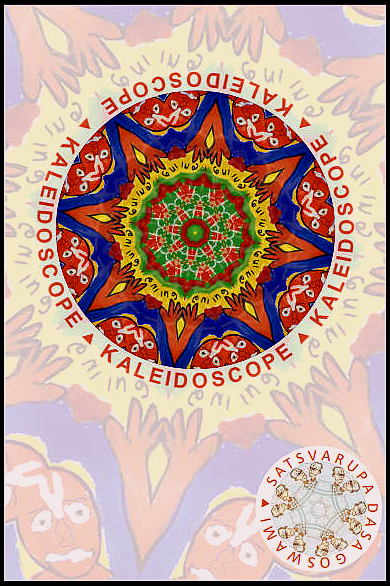 Kaleidoscope
KaleidoscopeStream of consciousness poetry that moves with the shifting shapes and colors characteristic of a kaleidoscope itself around the themes of authenticity. This is a book will transport you to the far reaches of the author’s heart and soul in daring ways and will move you to experience your own inner kaleidoscope.
Read more »
 A narrative poem. challenging and profound, about the journey of an itinerant monk who pursues new means of self-Seeking New Land
A narrative poem. challenging and profound, about the journey of an itinerant monk who pursues new means of self-Seeking New Landexpression.The reader is invited to discover his or her own spiritual pilgrimage within these pages as the author pushes every literary boundary to boldly create something wholly new and inspiring.